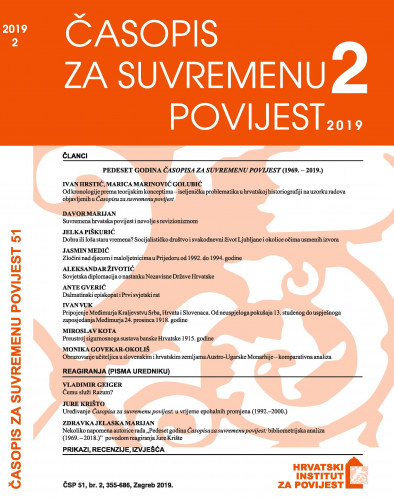Rad daje uvid u obrazovanje osnovnoškolskih učiteljica u slovenskim i hrvatskim zemljama Austro-Ugarske Monarhije preko zakonodavstva i organizacije ženskih učiteljskih škola. Istraživanje se sastoji od povijesne komparativne analize razdoblja između 1867. i 1914. godine. Pojavom Dvojne Monarhije dolazi do promjena u obrazovanju učiteljica. One se mogu najprije identificirati na temelju školskoga zakonodavstva. Učiteljice postaju državne službenice. Javljaju se nove državne ženske učiteljske škole, ali i one privatne s pravom javnosti. Analiza zakonodavstva pokazala je razlike između nastavnih planova u učiteljskim školama u slovenskim i hrvatskim zemljama unutar Monarhije. Komparacija njihovih aktivnosti također pokazuje razlike u razvoju, broju i organizaciji. U slovenskim zemljama, koje potpadaju pod austrijsko školsko zakonodavstvo, razvitak četverogodišnjih škola za učiteljice tekao je nešto brže nego u hrvatskim zemljama. Usporedba pokazuje da u slovenskim i hrvatskim zemljama dominiraju privatne škole za učiteljice.; This article is the first comparative study on the education of primary college women teachers in Slovenian and Croatian lands of Austria-Hungary through legislation and the organisation of women's teacher training colleges. The study consists of a historical comparative analysis covering the period from the emergence of the dualist Austria-Hungary (1867) until World War I (1914). During the period covered in this article, many changes were implemented in women's teacher education. Before the year 1869, women who wanted to become teachers acquired the necessary knowledge as nuns in monasteries, in private girls’ schools, or at home. The Austrian school legislation of 1869 had a quantitative and qualitative influence on the development and organisation of women’s teacher training colleges and on the quality of women’s teacher education. Women teachers became state employees. Analysis of the legislation showed differences between the syllabuses of women's teacher training colleges in Slovenian and Croatian lands. The syllabuses were adapted to the requirements of individual lands. A comparison of their activities also shows differences in development, number, and organisation. New state women’s teacher training colleges and private ones with public accreditation appeared. In Slovenian lands, under the Austrian school legislation, the development of four-year women’s teacher training colleges was somewhat faster than in Croatian lands. The comparison shows that private women’s teacher training colleges were predominant and women's teacher education became more standardised and professionalised both in Slovenian and Croatian lands.
Sažetak

 Časopis za suvremenu povijest : 51,2(2019) / glavni i odgovorni urednik, editor-in-chief Zdravka Jelaska Marijan.
Časopis za suvremenu povijest : 51,2(2019) / glavni i odgovorni urednik, editor-in-chief Zdravka Jelaska Marijan.